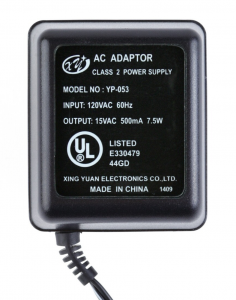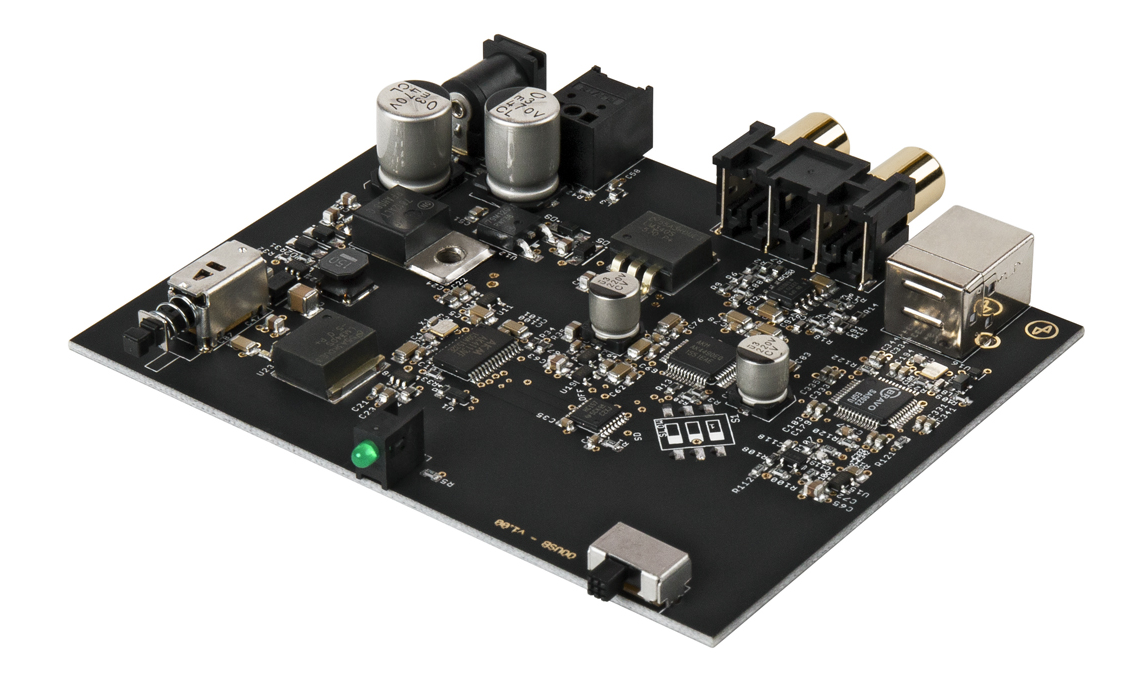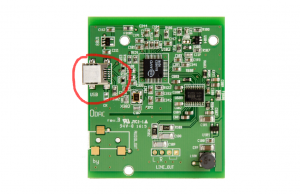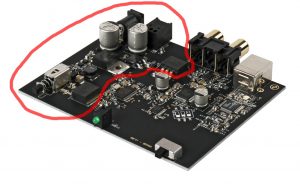This question originally appeared on reddit/headphones. I’m re-posting a longer response below, as the discussion commonly arises.
“Is an external power supply . . . an inherently easier design?”
Designing a sufficiently low noise supply from a USB +5V rail is economical and easy. Most manufacturers build entry-level DACs with this approach, relying on 3.3V regulation and filtering to clean up the USB supply. A decent regulator will achieve -50 to -90dB PSRR alone (frequency dependent), so unless the USB +5V rail is disastrous, the 3.3V DAC supply cleans up nicely.
 An external AC power adapter requires rectification and voltage regulation to step down to clean, low DC voltage free of 60Hz hum. Then you have to battle thermal constraints from the large voltage drop. More circuitry and engineering effort goes into accepting external AC power compared to USB, so the end result is always higher cost (those 15V power adapters are also not free, nor is the extra 1lb in shipping weight). The benefit of external power is consistent noise performance from one system to the next.
An external AC power adapter requires rectification and voltage regulation to step down to clean, low DC voltage free of 60Hz hum. Then you have to battle thermal constraints from the large voltage drop. More circuitry and engineering effort goes into accepting external AC power compared to USB, so the end result is always higher cost (those 15V power adapters are also not free, nor is the extra 1lb in shipping weight). The benefit of external power is consistent noise performance from one system to the next.
A well designed DAC fed by USB power usually hits published performance, but there can be exceptions. Dig through feedback of any USB powered DAC and you’ll find reports of audible degradation. USB power is unpredictable. I’ve argued in the past that consistency for 99%+ of customers is adequate. Some agreed, and some vehemently disagreed with me. If you’re the 1% or so with a noisy USB system, you need a USB hub, or a DAC that doesn’t rely on USB power. Having been on both sides of the fence, I’d rather maximize trust with customers by relying on external powered designs. We made this commitment when announcing OL DAC and EL DAC. But in cost constrained designs, external power is not an option.



Any plans to introduce an Element which has an AC powered DAC?
I neither confirm nor deny. 🙂
So for me to use this in my car (Chinese Android headunits don’t have the best preamp or processing) I’d need to go from 12v DC to AC for the power supply which is then converted to 5v DC for the DAC.
Is there a way for me to bypass that and feed 5v DC into the DAC directly?
Few questions,
1) If the USB source is noisy, isn’t that still feeding into the DAC, even though you aren’t utilizing the power from the USB. Or do you still do some filtering on the USB input? If the USB is noisy/flakey then I feel like it’d still degrade the data stream, either by higher jitter or some other effects. Have you done any testing with known noisy USB sources to see if moving the power supply did solve the issues, and if it did were there still any degradation in anyway as a result of the noisy USB input.
2) Why AC instead of using a DC brick? Doesn’t the AC have to be converted to DC anyway? I assume this is some way of controlling the quality of the conversion/step down. However if you worked with a manufacturer of power supplies, such as CWT to provide a high quality DC power brick of your specification the power section could be mostly external, physical isolation resulting in lower noise.
3) Switching power supplies vs linear. I’m assuming this is linear. I just ask because I hear this mentioned everywhere when it comes to audio equipment. Some argue switchers can be excellent, such as Schiit’s claim of the Modi 3.
Victor,
1) There are four pins in a standard USB connector: +5V, D+, D-, GND. Excluding the USB +5V supply is the greatest help in achieving consistent USB DAC performance. It’s true that noise can be present on the differential D+ and D- pins, but being differential signals, most noise cancels out and never makes it past the receiving IC. In rare cases, non-symmetrical noise may propagate further into the system. A good USB design is resilient to tx noise. Yes, I conduct USB DAC tests on a variety of USB ports (2.0, 3.0, 3.1, with hubs, without, on a motherboard, through a front panel header, etc.). Some are much noisier, especially on my current Ryzen test PC. It’s easy to observe changes in Jitter and Noise performance when changing the USB testbed, so my goal is to ensure the USB controller and DAC stages each perform their best.
Depending on your requirements, it can be argued that galvanic or other complete isolation of the D+/D-/GND pins would be best. Sure, this is possible. We did this in C5D years ago. Our support records confirm that OL DAC has been more successful than C5D. Some may disagree, but I currently believe it’s prudent to build a resilient USB DAC without galvanic isolation. If isolation is important, use TOSLINK! We can debate the pros/cons of each solution at length, but I am increasingly fond of optical connections for their simplicity and consistency. Native isolation is wonderful.
2) Yes, AC transformers mean we control the quality of AC/DC conversion. AC transformers are affordable. Moving the AC/DC conversion into an external DC supply would raise cost and restrict our ability to fine-tune the most important area of the audio design. Using USB +5V is a worthy consideration for simple DACs; at least the supply is free. Our latest DACs consume too much power for USB 2.0 ports. All of the UAC2 controllers are current hungry as well.
3) Please see the OL DAC release article. The DAC’s analog supplies are fed by linear regulators, while the digital ICs are fed by switching + linear regulation. I lost track of the number of prototypes we burned through to arrive at this performance solution. Again, it comes down to priorities: Performance, Consistency, Stability, Cost
I agree that switching technology is excellent when combined with linear post regulation.
Hi – does above argument apply only to DAC, or headphone amps such as ATOM too? If my house is not grounded (the wall power) would an external AC adapter get rid of 60Hz hum for the Atom Amp?
One source of distortion can be that windows have this “Selective suspend” feature on the power output of the USB ports in order to save power. I had a lot of distortion when listening with DACS (tested with several dacs) connected to my thinkpad. Disabling this feature removed it completely (so far at least… i did it yesterday but it looks promising).
Be aware that the setting might be hidden in your windows installation. I had to enable it through registry settings in windows but the process was straight forward ( i used method 2 in the url below).
https://answers.microsoft.com/en-us/windows/forum/all/usb-settings-in-power-plan-options-on-windows-10/38753b89-65d0-49c1-8f91-2bb50f9b19a0